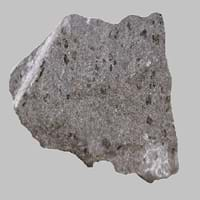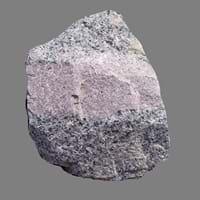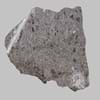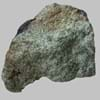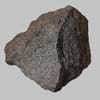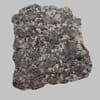Definition
Tephrite is an aphanitic to porphyritic textured, volcanic igneous rock
Aplite is a fine-grained granite composed mainly of feldspar and quartz
Discoverer
Van Tooren
Unknown
Etymology
From Greek tephra, ashes from Indo-European base, to burn
From German Aplit, from Greek haploos simple + -ite
Class
Igneous Rocks
Igneous Rocks
Sub-Class
Durable Rock, Hard Rock
Durable Rock, Hard Rock
Other Categories
Coarse Grained Rock, Fine Grained Rock, Medium Grained Rock, Opaque Rock
Fine Grained Rock, Opaque Rock
Texture
Aphanitic to Porphyritic
Granular, Graphic
Color
Black, Brown, Colourless, Green, Grey, White
Black, Grey, Orange, Pink, White
Durability
Durable
Durable
Scratch Resistant
Yes
Yes
Appearance
Vesicular
Veined or Pebbled
Interior Uses
Decorative Aggregates, Flooring, Homes, Interior Decoration
Bathrooms, Countertops, Decorative Aggregates, Entryways, Floor Tiles, Homes, Hotels, Kitchens, Stair Treads
Exterior Uses
As Building Stone, As Facing Stone, Garden Decoration, Office Buildings
As Building Stone, As Facing Stone, Bridges, Paving Stone, Near Swimming Pools, Office Buildings, Resorts
Other Architectural Uses
Curbing
Curbing
Construction Industry
Landscaping
As Dimension Stone
Medical Industry
Not Yet Used
Not Yet Used
Antiquity Uses
Artifacts, Sculpture
Artifacts, Monuments, Sculpture, Small Figurines
Commercial Uses
Production of Lime, Soil Conditioner
Curling, Gemstone, Laboratory bench tops, Small Sculptures, Tombstones
Types
Not Available
Not Available
Features
Host Rock for Lead
Available in lots of colors, Available in Lots of Colors and Patterns, Is one of the oldest rock
Archaeological Significance
Monuments
Not Yet Used
Used
Famous Monuments
Not Applicable
Data Not Available
Famous Sculptures
Data Not Available
Data Not Available
Pictographs
Not Used
Not Used
Petroglyphs
Not Used
Not Used
Formation
Tephrite is a fine-grained, hard rock which is a type of metasomatite, essentially altered basalt. It forms with or without crystallization, either below the surface as intrusive rocks or on the surface as extrusive rocks.
Aplites belong to intrusive igneous rocks which are mostly quart and alkali feldspar and are formed from residual eutectic granitic liquids and represent the final crystallization products of magma.
Mineral Content
Alkali feldspar, Nepheline, Plagioclase, Pyroxene
Amphibole, Biotite, Feldspar, Hornblade, Micas, Muscovite or Illite, Plagioclase, Pyroxene, Quartz
Compound Content
CaO, Carbon Dioxide, MgO, Silicon Dioxide
Aluminium Oxide, CaO, Iron(III) Oxide, FeO, Potassium Oxide, MgO, MnO, Sodium Oxide, Phosphorus Pentoxide, Silicon Dioxide, Titanium Dioxide
Types of Metamorphism
Cataclastic Metamorphism, Contact Metamorphism, Impact Metamorphism, Regional Metamorphism
Burial Metamorphism, Cataclastic Metamorphism, Hydrothermal Metamorphism, Regional Metamorphism
Types of Weathering
Biological Weathering, Chemical Weathering, Mechanical Weathering
Chemical Weathering, Mechanical Weathering
Types of Erosion
Chemical Erosion, Coastal Erosion, Glacier Erosion, Sea Erosion, Water Erosion
Chemical Erosion, Coastal Erosion, Wind Erosion
Grain Size
Medium to Fine Coarse Grained
Very fine-grained
Fracture
Uneven
Not Available
Streak
Bluish Black
White
Porosity
Very Less Porous
Less Porous
Luster
Subvitreous to Dull
Dull to Pearly to Subvitreous
Cleavage
Crenulation and Pervasive
Not Available
Toughness
2.4
Not Available
Specific Gravity
2.86
2.6
Transparency
Opaque
Opaque
Density
2.8-2.9 g/cm3
2.6 g/cm3
Resistance
Heat Resistant, Impact Resistant
Heat Resistant, Wear Resistant
Deposits in Eastern Continents
Asia
Not Yet Found
China, India, Iran, Saudi Arabia, Sri Lanka, Taiwan, Thailand, Turkey, Vietnam
Africa
Namibia, Uganda
Angola, Egypt, Madagascar, Namibia, Nigeria, South Africa
Europe
Germany, Hungary, Italy, Portugal, Spain
Austria, Belgium, Finland, France, Germany, Italy, Norway, Sardinia, Spain, Switzerland, The Czech Republic, Venezuela
Others
Not Yet Found
Not Yet Found
Deposits in Western Continents
North America
USA
Canada, USA
South America
Not Yet Found
Not Yet Found
Deposits in Oceania Continent
Australia
New Zealand, Western Australia
Not Yet Found
Tephrite vs Aplite Characteristics
Though some rocks look identical, they have certain characteristics which distinguish them from others. Characteristics of rocks include texture, appearance, color, fracture, streak, hardness etc. Tephrite vs Aplite characteristics assist us to distinguish and recognize rocks. Also you can check about Properties of Tephrite and Properties of Aplite. Learn more about Tephrite vs Aplite in the next section. The interior uses of Tephrite include Decorative aggregates, Flooring, Homes and Interior decoration whereas the interior uses of Aplite include Bathrooms, Countertops, Decorative aggregates, Entryways, Floor tiles, Homes, Hotels, Kitchens and Stair treads. Due to some exceptional properties of Tephrite and Aplite, they have various applications in construction industry. The uses of Tephrite in construction industry include Landscaping and that of Aplite include As dimension stone.
More about Tephrite and Aplite
Here you can know more about Tephrite and Aplite. The life cycle of a rock consists of formation of rock, composition of rock and transformation of rock. The composition of Tephrite and Aplite consists of mineral content and compound content. The mineral content of Tephrite includes Alkali feldspar, Nepheline, Plagioclase, Pyroxene and mineral content of Aplite includes Amphibole, Biotite, Feldspar, Hornblade, Micas, Muscovite or Illite, Plagioclase, Pyroxene, Quartz. You can also check out the list of all Igneous Rocks. When we have to compare Tephrite vs Aplite, the texture, color and appearance plays an important role in determining the type of rock. Tephrite is available in black, brown, colourless, green, grey, white colors whereas, Aplite is available in black, grey, orange, pink, white colors. Appearance of Tephrite is Vesicular and that of Aplite is Veined or Pebbled. Properties of rock is another aspect for Tephrite vs Aplite. Hardness of Tephrite and Aplite is 6.5. The types of Tephrite are Not Available whereas types of Aplite are Not Available. Streak of rock is the color of powder produced when it is dragged across an unweathered surface. The streak of Tephrite is bluish black while that of Aplite is white. The specific heat capacity of Tephrite is 0.92 kJ/Kg K and that of Aplite is 0.79 kJ/Kg K. Depending on the properties like hardness, toughness, specific heat capacity, porosity etc., rocks are resistant to heat, wear, impact, etc.Tephrite is heat resistant, impact resistant whereas Aplite is heat resistant, wear resistant.
